石畳の道に響くおこぼの音、格子戸から漏れる三味線の音色…。風情あふれる京都の花街ですが、「祇園」という名前は知っていても、実は京都には5つもの花街があり、それぞれに全く異なる歴史と個性があることはご存知でしょうか?その違いを知れば、京都の旅がもっと深く、味わい深いものになるはずです。
- 歴史と格式の「祇園甲部」、庶民文化から生まれた「宮川町」
- 川沿いの粋な「先斗町」、最古の歴史を誇る「上七軒」
- 小粋でアットホームな「祇園東」と各花街を彩る舞の競演
一口に「花街」と言えない、京都の奥深さ
現在、京都市内には「五花街(ごかがい)」と呼ばれる5つの公式な花街が存在します。祇園甲部、宮川町、先斗町、上七軒、祇園東。これらは単に場所が違うだけでなく、その成り立ちの歴史、街の雰囲気、そして舞妓さんや芸妓さんが習得する舞踊の流派まで、それぞれが独自の文化を育んできた独立した世界なのです。例えるなら、同じ都市にあるけれど、校風も制服も全く違う5つの名門校のようなもの。今回は、それぞれの花街のプロフィールを紐解き、その魅力に迫ります。
五者五様!京都五花街のプロフィール
それでは、個性豊かな五花街の世界を覗いてみましょう。
王者の風格、日本一の花街「祇園甲部(ぎおんこうぶ)」
- 特徴: 名実ともに日本最大、最高の格式を誇る花街。お茶屋の数、芸舞妓の数も最も多く、まさに花街の「王者」です。八坂神社の門前町として栄え、歴史的にも多くの著名人に愛されてきました。
- 雰囲気: 洗練された一流の街並み。「一見さんお断り」の文化が色濃く残り、格式と伝統を重んじる厳かな空気が漂います。
- 舞の流派: 井上流。能の影響を強く受けた、重厚で格調高い舞が特徴です。
明るく華やか、庶民が育てた「宮川町(みやがわちょう)」
- 特徴: 祇園甲部に次ぐ規模を持つ花街。その起源は、出雲阿国が歌舞伎踊りを始めた四条河原の芝居小屋にあります。庶民のエネルギーの中で育まれた歴史を持ちます。
- 雰囲気: 祇園甲部に比べ、どこか開放的で明るい雰囲気。観光客も歩きやすく、親しみやすさを感じさせます。
- 舞の流派: 若柳流。しなやかで優美、物語性豊かな振り付けが特徴です。
粋で洒脱、鴨川沿いの「先斗町(ぽんとちょう)」
- 特徴: 鴨川と木屋町通に挟まれた、細長い路地が印象的な花街。江戸時代に鴨川の護岸工事で生まれた新しい土地に、茶屋や旅籠ができたのが始まりです。
- 雰囲気: レストランやバーも多く、観光客で最も賑わう花街の一つ。川沿いのロケーションも相まって、粋で洒脱な雰囲気が漂います。
- 舞の流派: 尾上流。歌舞伎舞踊の流れを汲む、小気味よく愛らしい振り付けが特徴です。
歴史と静寂、最古の風格「上七軒(かみしちけん)」
- 特徴: 室町時代に北野天満宮の再建時に残った資材で7軒の茶屋を建てたのが始まりとされる、京都最古の花街。
- 雰囲気: 他の4つの花街が集まる中心部から少し離れた場所にあり、非常に静かで落ち着いた佇まい。古き良き京都の風情を色濃く残しています。
- 舞の流派: 花柳流。上品で派手すぎず、素朴さの中に奥深さを感じさせる舞が特徴です。
小さくとも個性的、通好みの「祇園東(ぎおんひがし)」
- 特徴: もとは祇園甲部と同じでしたが、明治時代に分かれた比較的新しい花街。五花街の中で最も規模が小さいですが、その分まとまりがあります。
- 雰囲気: アットホームで、どこか懐かしい雰囲気。個性的なお店も多く、通好みの魅力を持っています。
- 舞の流派: 藤間流。比較的自由闊達で、新しい試みも取り入れやすい表現豊かな舞が特徴です。
舞で知る花街の個性「をどり」巡り
各花街の個性を最も体感できるのが、春(祇園東のみ秋)に開催される舞踊公演、通称「をどり」です。それぞれの流派の舞を一度に見比べることができ、その違いはまさに各花街のアイデンティティそのものです。
- 祇園甲部: 都をどり
- 宮川町: 京おどり
- 先斗町: 鴨川をどり
- 上七軒: 北野をどり
- 祇園東: 祇園をどり
同じ演目でも、流派によって振り付けや表現が全く異なります。この「をどり」を観ることは、花街文化の神髄に触れる、またとない機会と言えるでしょう。
あなたのお気に入りはどの花街?
ここまで五花街のそれぞれの特徴を見てきました。まとめると、このようになります。
- 伝統と格式を重んじるなら → 祇園甲部
- 明るく華やかな雰囲気が好きなら → 宮川町
- 粋でモダンな空気を楽しみたいなら → 先斗町
- 静かで歴史ある風情に浸りたいなら → 上七軒
- アットホームで個性的な魅力に触れたいなら → 祇園東
もちろん、これはあくまで一つの切り口です。どの花街も、長い年月をかけて独自の文化を育んできた、かけがえのない場所です。次に京都を訪れる際は、ぜひ「お気に入りの花街」を探すという視点で、街を歩いてみてはいかがでしょうか。
解説ポイント①:歴史と格式の「祇園甲部」、庶民文化から生まれた「宮川町」
祇園甲部と宮川町は隣接していますが、その成り立ちは対照的です。祇園甲部は八坂神社の門前町として発展し、古くから公家や武家、政財界の要人をもてなす、いわば日本の社交界の中心でした。そのため、伝統と格式を何よりも重んじる文化が育まれました。一方の宮川町は、日本初の歌舞伎と言われる出雲阿国の興行場の近くに、芝居見物の客をもてなす茶屋街として発展しました。庶民の熱気とエネルギーの中で生まれたため、祇園甲部よりものびやかで大衆的な親しみやすさが特徴となっています。この出自の違いが、街の空気感や芸妓たちの気風にも反映されているのです。
解説ポイント②:川沿いの粋な「先斗町」、最古の歴史を誇る「上七軒」
この二つの花街もまた、そのロケーションと歴史において非常に対照的です。先斗町は、鴨川と高瀬川という二つの川に挟まれた細長い土地にあります。川の流れや床文化と一体化したその景観は、開放的で粋な雰囲気を生み出しています。飲食店がひしめき、常に新しい風が吹く、モダンな魅力を持つ花街です。対して上七軒は、学問の神様・菅原道真を祀る北野天満宮と深い繋がりを持ち、室町時代から続く京都最古の歴史を誇ります。中心部から離れた立地は、喧騒を忘れさせるほどの静寂と落ち着きをもたらし、昔ながらの京都の風情を今に伝えています。
解説ポイント③:小粋でアットホームな「祇園東」と各花街を彩る舞の競演
五花街で最もコンパクトな祇園東は、他の4つの花街が春に舞踊公演を行うのに対し、唯一秋に「祇園をどり」を開催します。「繰り返し訪れてもらえるように」という趣向で毎年演目を変えるなど、小規模ながらも創意工夫に満ちています。そして、これら五花街の「をどり」は、それぞれの芸の流派の違いを体感する最高の機会です。例えば、祇園甲部の井上流が「舞」という言葉がしっくりくる静かで重厚な動きであるのに対し、先斗町の尾上流は「踊り」という言葉が似合うような、リズミカルで軽快な動きが特徴です。この流派による表現の違いこそが、各花街が守り続ける伝統文化の核であり、その多様性こそが京都の花街文化全体の豊かさに繋がっているのです。
参考文献
- 京都花街組合連合会【おおきに財団】 – 五花街の紹介
- 京都市観光協会 – 京都観光Navi:祇園甲部
- そうだ 京都、行こう。 – 京都五花街。お茶屋遊びと舞妓さんの世界
- 祇園商店街振興組合 – GION.or.jp
【English Article】
【Kyoto’s Hanamachi】Which “Flower Town” Is for You? A Complete Guide to the 5 Districts
The sound of “okobo” clogs on stone pavement, the melody of a shamisen leaking from behind a lattice door… These are the atmospheric scenes of Kyoto’s “hanamachi” (flower towns). While many know the name “Gion,” did you know that Kyoto actually has five distinct hanamachi, each with its own unique history and character? Understanding their differences will surely make your trip to Kyoto a deeper and more enriching experience.
- “Gion Kobu” for History and Prestige, “Miyagawacho” Born from Popular Culture
- The Chic Riverside “Pontocho,” The Ancient and Historic “Kamishichiken”
- The Quaint and Cozy “Gion Higashi” and the Dance Performances that Define Each District
More Than Just One “Hanamachi”: The Depth of Kyoto
Currently, there are five officially recognized hanamachi in Kyoto, collectively known as the “Gokagai.” They are Gion Kobu, Miyagawacho, Pontocho, Kamishichiken, and Gion Higashi. These are not merely different locations; they are independent worlds that have each cultivated their own unique culture, from their historical origins to the style of dance mastered by their maiko and geigi. You could think of them as five prestigious schools in the same city, each with a completely different ethos and uniform. Let’s delve into the profiles of each hanamachi to explore their charms.
Five Districts, Five Personalities: Profiles of the Kyoto Gokagai
Let’s take a peek into the world of these five unique flower towns.
Gion Kobu: The King’s Dignity, Japan’s Premier Hanamachi
- Characteristics: In name and reality, this is the largest and most prestigious hanamachi in Japan. It boasts the highest number of “ochaya” (teahouses) and geiko/maiko, truly making it the “king” of flower towns. It flourished as the town before Yasaka Shrine and has been loved by many famous figures throughout history.
- Atmosphere: A sophisticated, top-tier district. The culture of “ichigen-san okotowari” (no first-time customers without a referral) is strong, creating a solemn atmosphere that values prestige and tradition.
- Dance Style: Inoue-ryu. Characterized by its profound and stately dances, heavily influenced by Noh theater.
Miyagawacho: Bright and Splendid, Nurtured by Commoners
- Characteristics: The second-largest hanamachi after Gion Kobu. It originated near the Shijo-gawara theater where Izumo no Okuni first performed kabuki dance. It has a history nurtured by the energy of the common people.
- Atmosphere: Compared to Gion Kobu, it has a more open and bright atmosphere. It’s easy for tourists to walk through, giving it a friendly feel.
- Dance Style: Wakayagi-ryu. Known for its supple, graceful, and story-rich choreography.
Pontocho: Chic and Urbane, Along the Kamo River
- Characteristics: A distinctive hanamachi with a long, narrow alley running between the Kamo River and Kiyamachi Street. It began when teahouses and inns were built on new land created by embankment work on the Kamo River during the Edo period.
- Atmosphere: One of the liveliest hanamachi, filled with restaurants and bars popular with tourists. Its riverside location contributes to a chic and urbane ambiance.
- Dance Style: Onoe-ryu. Stemming from kabuki dance, it features lively and charming choreography.
Kamishichiken: History and Serenity, The Oldest Style
- Characteristics: Considered the oldest hanamachi in Kyoto, said to have started when seven teahouses were built using leftover materials from the reconstruction of Kitano Tenmangu Shrine in the Muromachi period.
- Atmosphere: Located a little away from the central area where the other four districts are gathered, it has a very quiet and calm佇まい. It strongly retains the atmosphere of old Kyoto.
- Dance Style: Hanayagi-ryu. An elegant and understated style of dance that conveys a sense of depth within its simplicity.
Gion Higashi: Small yet Unique, A Connoisseur’s Choice
- Characteristics: Originally part of Gion Kobu, it became an independent district in the Meiji era. It is the smallest of the Gokagai, but this gives it a strong sense of community.
- Atmosphere: A cozy, somewhat nostalgic atmosphere. It has many unique shops and possesses a charm that appeals to connoisseurs.
- Dance Style: Fujima-ryu. Known for its relatively free and expressive dances that can easily incorporate new ideas.
Discovering Hanamachi Personalities Through Dance: The “Odori” Tour
The best way to experience the unique character of each hanamachi is through their public dance performances, known as “Odori,” held in spring (or autumn for Gion Higashi). This is a perfect opportunity to see and compare the dance styles of each school, the differences of which are the very identity of each hanamachi.
- Gion Kobu: Miyako Odori
- Miyagawacho: Kyo Odori
- Pontocho: Kamogawa Odori
- Kamishichiken: Kitano Odori
- Gion Higashi: Gion Odori
Even with the same theme, the choreography and expression are completely different depending on the school. Watching these “Odori” is an unparalleled opportunity to touch the essence of hanamachi culture.
Which Hanamachi is Your Favorite?
We’ve looked at the unique features of the five flower towns. In summary:
- If you value tradition and prestige → Gion Kobu
- If you like a bright and splendid atmosphere → Miyagawacho
- If you want to enjoy a chic and modern vibe → Pontocho
- If you wish to immerse yourself in a quiet, historic setting → Kamishichiken
- If you’re drawn to cozy and unique charm → Gion Higashi
Of course, this is just one perspective. Each hanamachi is an irreplaceable place that has cultivated its own unique culture over many years. On your next visit to Kyoto, why not try walking the streets with the new goal of finding your “favorite hanamachi”?
Analysis Point ①: “Gion Kobu” for History and Prestige, “Miyagawacho” Born from Popular Culture
Gion Kobu and Miyagawacho are adjacent, but their origins are contrasting. Gion Kobu developed as the town serving Yasaka Shrine and has long been the center of Japan’s high society, entertaining court nobles, samurai, and political and financial leaders. This nurtured a culture that places the utmost importance on tradition and prestige. Miyagawacho, on the other hand, grew as a teahouse district near the performance venues of Izumo no Okuni, the founder of kabuki. Born amidst the energy of common people, it features a more relaxed and approachable atmosphere than Gion Kobu. This difference in origin is reflected in the districts’ ambiance and the disposition of their geigi.
Analysis Point ②: The Chic Riverside “Pontocho,” The Ancient and Historic “Kamishichiken”
These two districts are also highly contrasted in their location and history. Pontocho is situated on a narrow strip of land between the Kamo and Takase rivers. Its scenery, integrated with the flow of the river and its “yuka” (riverside dining platforms), creates an open and chic atmosphere. It is a modern and charming district, bustling with restaurants and always feeling a fresh breeze. In contrast, Kamishichiken has deep ties to Kitano Tenmangu Shrine, dedicated to the god of learning, Sugawara no Michizane, and boasts the longest history, dating back to the Muromachi period. Its location away from the city center provides a tranquility that makes one forget the hustle and bustle, preserving the traditional feel of old Kyoto.
Analysis Point ③: The Quaint and Cozy “Gion Higashi” and the Dance Performances that Define Each District
Gion Higashi, the most compact of the five districts, holds its “Gion Odori” in the autumn, while the other four perform in the spring. It is full of creativity, changing its program every year “so that visitors can enjoy it again and again.” These five “Odori” performances offer the best opportunity to experience the different schools of dance. For example, while the Inoue-ryu of Gion Kobu features quiet, profound movements best described as “mai” (a more solemn, spiritual dance), the Onoe-ryu of Pontocho is characterized by rhythmic, lively movements better described as “odori” (a more active, festive dance). This difference in expression based on the school is the core of the traditional culture that each hanamachi preserves, and its diversity contributes to the richness of Kyoto’s hanamachi culture as a whole.

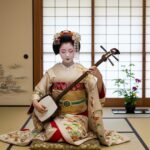
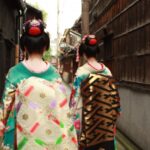
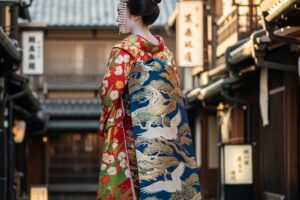
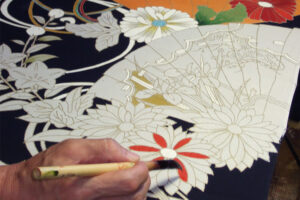
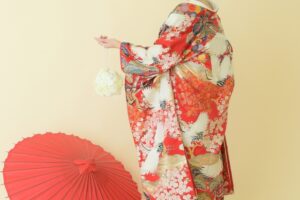
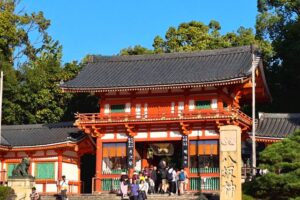

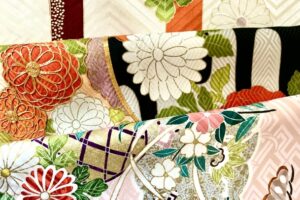

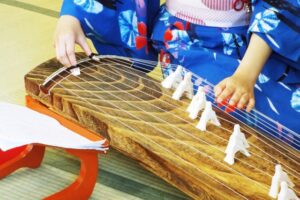
コメントを残す